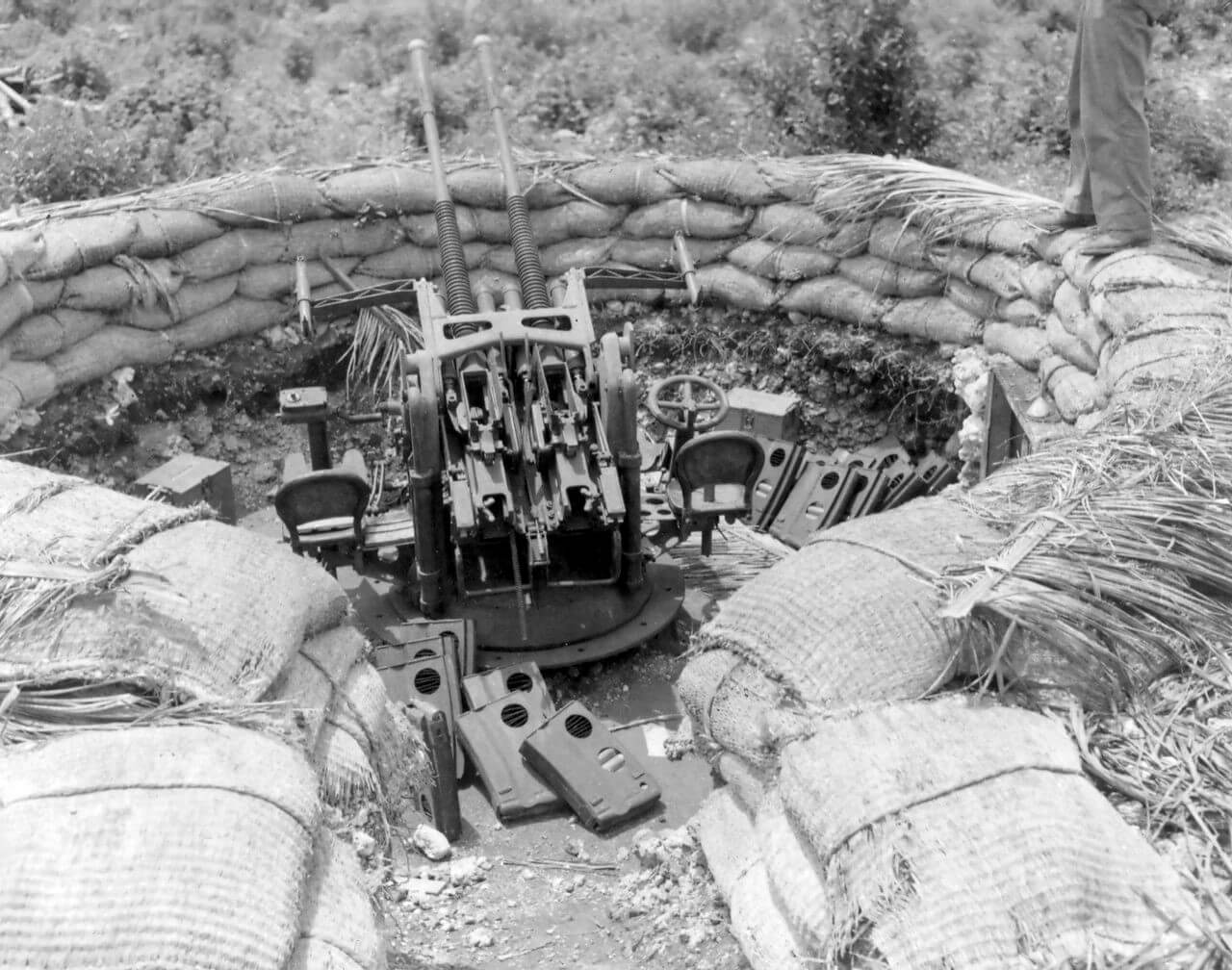| Year | 1936 |
| Weapon Type | Light Anti-Aircraft & Anti-Tank Gun |
| Origin & Designer | [@designer] |
| Numbers Produced | 33.000 |
| Crew | 3 (Single Barrel) 7 (Twin Barrel) |
| Calibre | 25mm L/60 (25x163) |
| Elevation | -10° to +85° |
| Traverse | 360° |
| Breech | [@breech] |
| Recoil | Spring |
| Gun Sight | Open Ring |
| Gun Mount | Pedestal |
| Carriage | Twin Wheeled & Split Trail (Single Barrelled versi |
| Trailers | [@trailers] |
| Gun Shield | [@gun_shield] |
| Armoured Plate | [@armoured_plate] |
| Barrel Length | 1.500mm (L/60) |
| Overall Length | [@length] |
| Width | [@width] |
| Height | [@height] |
| Weight | 785 kg (Single Barrel) 1.100 kg (Twin Barrel) |
| Round Weight | 658g (HE) 714g (AP) |
| Muzzle Velocity | 820 m/s |
| Feed | 15 Round Box Magazine |
| Magazine Capacity | [@magazine_capacity] |
| Practical Rate of Fire | 110 r.p.m. (Single Barrel) |
| Rate of Fire | [@rate_of_fire] |
| Maximum Rate of Fire | 260 r.p.m. (Single Barrel) |
| Maximum Ceiling | 2.500m |
| Maximum Ground Range | 7.500m |
| Maximum Range | [@maximum_range] |
| Armour Penetration | 42mm @ 500m @ 30° |
| Traction | [@traction] |
| Variants | [@variants] |
| Notes | The type 96 was another anti-aircraft gun based on a Hotchkiss design and early variants were built in France and later further developed in Japan. It came in single, double and triple mountings and was an effective weapon especially at low altitude, but was slow in traversing and elevation. It was mainly used by the IJN but many were used in the ground role as both an anti-aircraft gun and anti-tank gun. Like the type 38, the type 96 saw out the war. |
